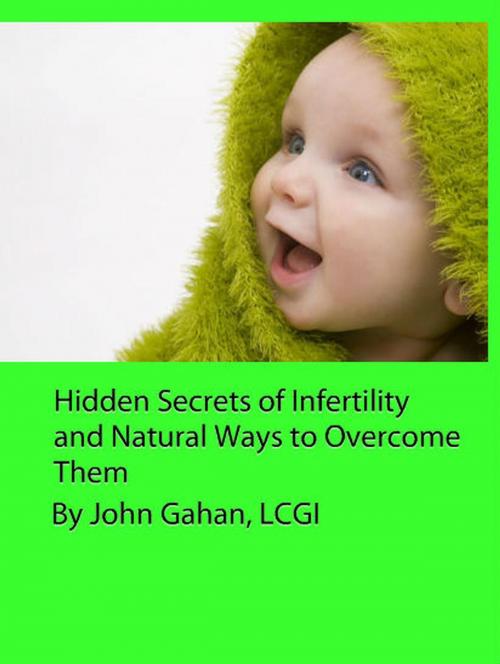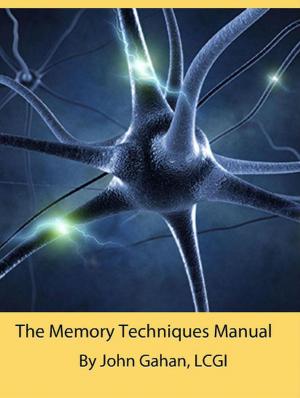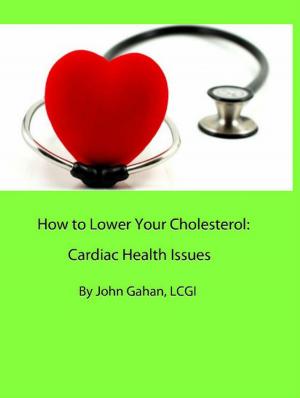Hidden Secrets of Infertility and Natural Ways to Overcome Them
Nonfiction, Family & Relationships, Babies & Toddlers, Infertility, Health & Well Being, Health, Social & Cultural Studies, Social Science| Author: | John Gahan, LCGI | ISBN: | 9781536558166 |
| Publisher: | Sepharial | Publication: | July 1, 2017 |
| Imprint: | Language: | English |
| Author: | John Gahan, LCGI |
| ISBN: | 9781536558166 |
| Publisher: | Sepharial |
| Publication: | July 1, 2017 |
| Imprint: | |
| Language: | English |
For those who have never experienced it, the heartbreak of infertility is difficult to put into words. Of course, you know you'll be good parents. But yet you look around your house and there are no children to call your own.
You go outside. You see happy children, happy couples and happy families. Why aren't you one of them?
Is it fair?
Of course not. But that's the bad news. You're infertile. There is a silver lining -- at least that's what you keep telling yourself. And that's the fact that the time period in which you live is blessed with the most modern technology, making even the seemingly impossible act for you -- getting pregnant -- a possibility.
And as long as you haven't exhausted all your possibilities, you're going to keep hoping and praying that one day -- very soon -- you will be pregnant.
And that's not false hope. If you would have lived a hundred years ago, your infertility would have been a foregone conclusion. Today a wide variety of options are at your disposal that may very well help you turn the corner from childless to loving parent.
And while I'm talking right now specifically about modern conventional -- in some cases high tech -- treatments. Those aren't the only options available to you.
Don't dismiss out of hand the seemingly simple, common sense ideas that may come your way as well. These very many times come in the form of a more natural approach.
You Are Not Alone
I'm sure this doesn't make you feel any better, but you're not alone in what must surely seem to you at times as a desperate attempt to conceive and give birth.
Consider the following statistics if you will. There are approximately 7.3 million women between the ages of 15 to 44 -- those peak childbearing ages who experience some problems with getting pregnant. These individuals are not infertile, but they are, nonetheless, experiencing problems conceiving.
Another 2 million women or roughly 7 ½ percent of the population in the 15 to 44 demographic are, indeed, infertile.
It's for these women and their partners that this book is written. No on can imagine the individual heartbreak each couple is experiencing. And no one for sure really knows how many unions have been broken due to infertility problems.
The scope of the problem, the many facets of the subject -- by sheer volume alone -- prevents any in depth presentation of the problems and its possible solutions.
The book though does represent a jumping off point, if you will, a primer of sorts for the subject of infertility, providing you with the start of an overall wide ranging education.
Think of Hidden Secrets of Infertility as your introduction to the topic -- your first along a journey in your attempt to define and solve your problem.
In addition to the chapters on causes, treatment -- both conventional and alternative - you'll find resources. They are your next step solving your infertility problems.
Good luck!
For those who have never experienced it, the heartbreak of infertility is difficult to put into words. Of course, you know you'll be good parents. But yet you look around your house and there are no children to call your own.
You go outside. You see happy children, happy couples and happy families. Why aren't you one of them?
Is it fair?
Of course not. But that's the bad news. You're infertile. There is a silver lining -- at least that's what you keep telling yourself. And that's the fact that the time period in which you live is blessed with the most modern technology, making even the seemingly impossible act for you -- getting pregnant -- a possibility.
And as long as you haven't exhausted all your possibilities, you're going to keep hoping and praying that one day -- very soon -- you will be pregnant.
And that's not false hope. If you would have lived a hundred years ago, your infertility would have been a foregone conclusion. Today a wide variety of options are at your disposal that may very well help you turn the corner from childless to loving parent.
And while I'm talking right now specifically about modern conventional -- in some cases high tech -- treatments. Those aren't the only options available to you.
Don't dismiss out of hand the seemingly simple, common sense ideas that may come your way as well. These very many times come in the form of a more natural approach.
You Are Not Alone
I'm sure this doesn't make you feel any better, but you're not alone in what must surely seem to you at times as a desperate attempt to conceive and give birth.
Consider the following statistics if you will. There are approximately 7.3 million women between the ages of 15 to 44 -- those peak childbearing ages who experience some problems with getting pregnant. These individuals are not infertile, but they are, nonetheless, experiencing problems conceiving.
Another 2 million women or roughly 7 ½ percent of the population in the 15 to 44 demographic are, indeed, infertile.
It's for these women and their partners that this book is written. No on can imagine the individual heartbreak each couple is experiencing. And no one for sure really knows how many unions have been broken due to infertility problems.
The scope of the problem, the many facets of the subject -- by sheer volume alone -- prevents any in depth presentation of the problems and its possible solutions.
The book though does represent a jumping off point, if you will, a primer of sorts for the subject of infertility, providing you with the start of an overall wide ranging education.
Think of Hidden Secrets of Infertility as your introduction to the topic -- your first along a journey in your attempt to define and solve your problem.
In addition to the chapters on causes, treatment -- both conventional and alternative - you'll find resources. They are your next step solving your infertility problems.
Good luck!















